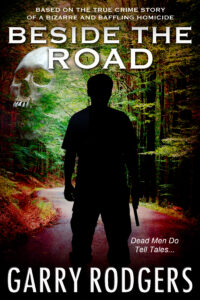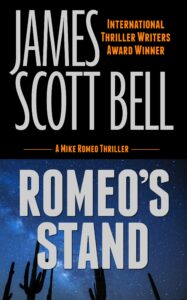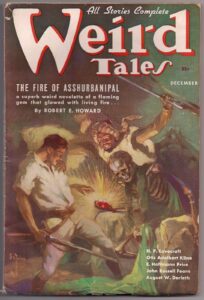Most people think a detective’s life is action-packed. You know—the shoot-‘em-up and kick-‘em-down thing. That happens from time to time, but a typical day in the life of a detective involves major case management, amassing admissible evidence in serious crime investigations and a lot of networking. It’s not that exciting.
For my debut post on The Kill Zone, I thought I’d give you a look at what really goes on behind the screen in the detective world. It’s not like you see in CSI shows and Netflix specials. Most detective work has long periods of painstaking procedure with only short spurts of adrenaline.
I liked it that way. I spent a career with Canada’s national police force, the RCMP, where I served as an investigator with the Serious Crimes Section. We mostly dealt with homicide cases because murders take a lot of time and you can’t mess one up. That’s a sure-fire way to end up writing traffic tickets.
I looked back in my notebooks and picked a particular day that was somewhat routine but had enough going on to interest you. It was a Thursday in the summertime. I was on dayshift in a suburb of Vancouver, British Columbia, and my schedule was 8 am to 4:30 pm.
 I got into the office just after 7. With coffee in hand, I checked our internal email server to see what floated in since last shift. For a change, not much was there. I opened Outlook, and then set priorities for the day. Those were four squares of “Must-Do”, “Should-Do”, “Might-Do” and “It Don’t Matter”. I learned this organizational technique from a Franklin Day Planner my daughter gave me for Christmas.
I got into the office just after 7. With coffee in hand, I checked our internal email server to see what floated in since last shift. For a change, not much was there. I opened Outlook, and then set priorities for the day. Those were four squares of “Must-Do”, “Should-Do”, “Might-Do” and “It Don’t Matter”. I learned this organizational technique from a Franklin Day Planner my daughter gave me for Christmas.
The system works. This day, my top priority was furthering a recent death case where we’d found a decomposing body dumped down a wooded bank beside a rural road. It turned out to be the most bizarre and baffling homicide case of my career.
The corpse looked like a zebra-zombie with a wild-looking stripe pattern across his bare torso. Gaps in the trees allowed a part-on-part-off sun scorch which left him partly mummified and partly putrefied like an ebony and ivory piano key of human breakdown. The autopsy showed he was gut-shot, but that wasn’t the end of the story.
At 7:45, Harry showed up at the Serious Crimes office. It looked like she was hungover. It was hard to tell with my partner, Harry. Harry was a large lady with large hair and an even larger personality. Her real name was Sheryl Henderson, but we called her Harry after the Bigfoot in the movie Harry and the Hendersons.
Our squad consisted of four teams of two detectives each. Because two heads are better than one (most of the time), we found pairing was the best way to investigate complicated cases like murders, attempted murders, rapes, armed robberies and the occasional kidnapping or extortion that happened in the drug world. Pairing is also safer when we’re on the street, and it’s more credible when we’re in court.
This morning, Harry “had court”. That was the universal cop-term for being subpoenaed as a witness. It meant having to hang around the courthouse and wait to see if we’d be called to testify. Or not.
There was a lot, and I mean a lot, of time wasted at the courthouse. But, they were the end to our means, and what we delivered as evidence packages suffered tremendous scrutiny. There’s nothing worse than being “on the stand” and having to explain why you messed up.
Back to the day.
 I was on my own, doing follow-ups on our man from beside the road. Harry got her lies straight, and she left to meet the prosecutor. Once she was out the door, I took-on my top priority. That was trying to figure out who the hell this dead and rotting guy was. From that, I hoped to solve what happened to him.
I was on my own, doing follow-ups on our man from beside the road. Harry got her lies straight, and she left to meet the prosecutor. Once she was out the door, I took-on my top priority. That was trying to figure out who the hell this dead and rotting guy was. From that, I hoped to solve what happened to him.
Brian MacAllister beat me to the phone call. Brian was the senior firearms examiner at our crime lab. He was also a good friend outside of work.
“This one’s weird.” I knew Brian was shaking his head. “That twenty-two bullet from your guy beside the road? There’s no rifling or striation marks on it. Like it was never fired… like he swallowed the damn thing.”
“Serious?” I’d seen the bullet when the pathologist plucked it from the viscera. I looked at it with my naked eye and, yeah, it seemed smooth as a baby’s butt. But, then, I couldn’t see what Brian could see with his scanning electron microscope.
“Never seen this before.” Brian paused. “I’m thinking a slick bore like an antique dueling pistol. Or, it could be the tip of things to come. A Three-D laser-printed pistol downloaded from the dark web.”
“Any chance of making a match?” I sensed Brian was perplexed, but he was a competent expert and knew his stuff.
“Hmmm… dunno. We rely on rifling and engraving. None here. Might have to get Chemistry Section involved and do bullet-lead composition analysis or neutron activation. Leave it with me.”
I got off the phone and took another call. This was from Honey Phelps, our coroner. Love that name, Honey. She fit the part.
Honey updated me on our entomology evidence where we used insect remains to establish an estimated time of death. She said the forensic entomologist, who we privately called “The Bug Bitch”, gave a two-week period. Seems our mystery man lay stinking beside the road for around 14 days before we found him.
My next stop was down the hall to the Forensic Identification Section. At the autopsy, the pathologist clipped each finger and thumb tip from the cadaver and placed them in individual vials of formalin. The idea was to turn what was left of the skin into a malleable or rubbery substance to raise fingerprint detail.
Sergeant Cheryl Hunter was my go-to in the CSI department. Cheryl dashed my hopes of anytime soon by telling me she needed more time finger-fixing before she could try for an ID. In the meantime, I was stuck with not knowing who this John Doe was.
I got another call. It was our Street Crew team, and they wanted to talk to me. I met them in their hovel of a basement office.
For some reason, lots of cops get nicknames. My boss was “Leaky” Lewis, and he earned that handle from chronic post-urinary drip. The Street Crew pair were “Beefcake” and “The Inseminator”. Beefcake looked like Fabio from Harlequin Romance covers and The Inseminator was a weasely little sex addict.
Beefcake did the talking. “We got intel that a hooker beaked to a John that she knows your dead guy. Problem, though. We don’t know who the hooker is. Just that she goes by the trick name Amber.”
I felt a rush. This was the first time since we found Beside The Road that anyone on the street talked. Up till now, there was zero—zilch—nuttin’—being said. That made the case more peculiar.
Beefcake said they’d dig into this. The Inseminator vigorously nodded. I had no doubt they would. In the meantime, I went back to my office and found mail on my desk.
One letter was from the Federal Justice Department. They had a wrongful conviction application from an inmate who now decided he didn’t do it. I looked at the name. Yeah. Yeah. He spouts off in a motel room to a couple hippie chicks and confesses to a murder including giving out key-fact or holdback evidence that only the killer and the investigators know. I’ll get to this when I get to it.
The other letter deserved attention. This was from the National Parole Board who needed victim impact statements from the family of a murder victim. The case happened before my time, but I sure knew about it. So did pretty much everyone. Twenty-five years had passed, and the animal wanted loose from its cage. I moved this to Box-B.
I was about to tap into the CPIC database. That was the Canadian Police Information Center, and it held a lot of mineable stuff to help identify my latest murder victim. The phone toned again.
It was a reporter from Global television who I had an on-and-off-again relationship with. Professionally, I mean, although she was a knockout brunette with teeth that should be licensed. J’Anna had a tip for me. A viewer called-in about Beside The Road, and it sounded good.
The murder victim was a carnie, the tipster said. He was a carnival worker who disappeared from the traveling circus right when The Bug Bitch estimated time of death. J’Anna gave me the name. I plugged it into CPIC. Everything fit. All I needed now was some prints, so I ordered them.
It was noon.
I met a dear friend for lunch. Sharlene Bate outranked me, but I’d known her since she was a gangly teen with a pimple problem. Now, she was Inspector Bate from the regional force called I-HIT, the Integrated Homicide Investigation Team.
I don’t know if I have a thing for women with great teeth, but in a dental war, Sharlene and J’Anna would have fought to the death. Sharlene, though, had a common mentor with me—Detective Sergeant Fred Mahle—who gave her the nickname “Chicklets”. Good old Fred…
Sharlene and I talked a bit of shop. Some included who topped the upcoming promotion and transfer list. Mostly, though, we talked about her daughter—our God-daughter’s—medical problem and Sharlene’s postponed re-marriage plans.
I got back to the office around 1:30. There was a note on my desk to call the Emergency Response Team leader. ERT is a secondary duty secondment for some police officers, and I was part of that alumni. I was too old now to dress up and play army, but I still helped in training programs.
Another secondment was lecturing at the Police College. I had a specialty in effective interviewing techniques and often resourced in seminars to share skills with other investigators. There was an email confirming a lecture date for the fall, and I banged out a quick reply.
I moved off Beside The Road’s file for the day. It’d be nice to carry one file at a time, but reality in the detective business is each investigative team has around twenty open dossiers. Some require urgent action, like figuring out Beside The Road. Some were solved cases pending in court. Then, there were cold cases that still needed “Diary Date” entries to keep them from freezing right over.
I spent the afternoon on Box B and Box C, then called ‘er quits. It was 4:45 pm. I phoned my wife, got dinner directions and stopped at Thrifty Foods for supplies. At 5:30, I parked my unmarked Explorer in our driveway, went through the garage, put my Sig Sauer in the laundry room locker and walked into the kitchen.
My wife was at the table, playing Words With Friends on her iPad. I gave her a kiss, heard about the crazy day at her work and we had small-chat about our grown-up & gone kids.
Then, I reached into an upper cabinet, pulled down a bottle and poured two fingers of Scotch over frozen rocks. She sipped her glass of white wine as we sat in a relaxed, pre-dinner silence.
——
 Garry Rodgers is a retired homicide detective with a second career as a forensic coroner. Now he’s a crime writer and host of a popular blog at www.DyingWords.net as well as being a regular contributor to the HuffPost.
Garry Rodgers is a retired homicide detective with a second career as a forensic coroner. Now he’s a crime writer and host of a popular blog at www.DyingWords.net as well as being a regular contributor to the HuffPost.
Garry lives on Vancouver Island in British Columbia at Canada’s southwest coast where he spends off-time cruising around the saltwater. Connect with Garry on Twitter and Facebook.
 My fifth Mike Romeo thriller, Romeo’s Stand, has just been published. If this is your first foray into Romeo territory, know that you can read the books in any order, so now’s as good a time as any to jump in.
My fifth Mike Romeo thriller, Romeo’s Stand, has just been published. If this is your first foray into Romeo territory, know that you can read the books in any order, so now’s as good a time as any to jump in. [Rod Serling voice] “Picture if you will a writer, confined to his hovel and wondering what to write next. In a moment he will decide to try something unlike anything he’s written before. But when he submits the book he won’t be hearing from an editor. He’ll be getting a long and detailed message directly from … The Twilight Zone.”
[Rod Serling voice] “Picture if you will a writer, confined to his hovel and wondering what to write next. In a moment he will decide to try something unlike anything he’s written before. But when he submits the book he won’t be hearing from an editor. He’ll be getting a long and detailed message directly from … The Twilight Zone.”



 What are your writing goals for 2020? Are you on track to achieve those goals?
What are your writing goals for 2020? Are you on track to achieve those goals? 






 “Life is like a box of chocolates—you never know what you’re gonna get.” — Forrest Gump
“Life is like a box of chocolates—you never know what you’re gonna get.” — Forrest Gump

